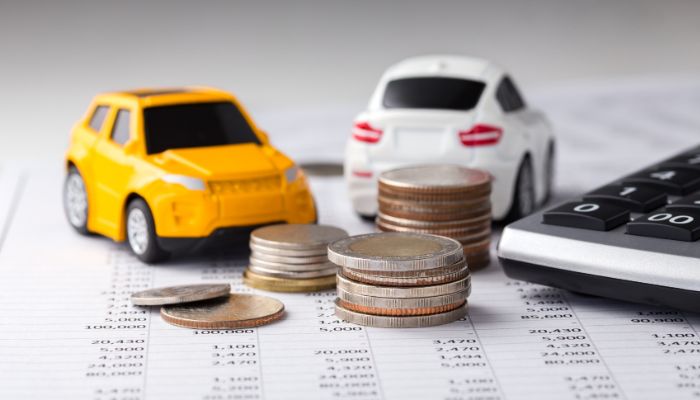What is The Difference Between Leasing and Financing a Car
When it comes to acquiring a new car, there are two primary options to consider: leasing and financing. Understanding the differences between these options is crucial in making an informed decision that aligns with your financial situation, driving habits, and personal preferences. This blog post aims to help you navigate the world of car leasing and financing by examining the pros and cons of each, factors to consider when choosing between them, and tips for making the right decision.
By shedding light on the key aspects of leasing and financing, we hope to empower you with the knowledge to make a confident choice when acquiring your next vehicle. So, let’s delve into the world of car leasing and financing to determine which option best suits your needs and circumstances.
What is Car Leasing?
Car leasing is a popular alternative to purchasing a vehicle, where you essentially rent the car for a predetermined period, typically 2-4 years. In a lease agreement, you pay a monthly fee to the leasing company for the right to use the vehicle during the lease term. At the end of the lease, you have the option to either return the car and walk away or purchase it at a predetermined price known as the residual value.
Pros of leasing a car
- Lower monthly payments: Lease payments are usually lower than financing payments because you’re only paying for the vehicle’s depreciation during the lease term rather than the entire purchase price.
- Ability to drive a new car every few years: Leasing allows you to enjoy the latest models with updated features and technology, as you can simply return the car at the end of the lease and start a new lease on a different vehicle.
- Limited or no upfront costs: Most lease agreements require a minimal down payment or, in some cases, none. This can make it more affordable to get into a new car without a substantial initial investment.
Cons of leasing a car
- No ownership at the end of the lease: When you lease a car, you don’t build any equity in the vehicle, and you won’t own it at the end of the lease term unless you choose to purchase it.
- Mileage restrictions and penalties: Lease agreements typically come with annual mileage limits, and exceeding those limits can result in costly fees at the end of the lease term.
- Potential fees for excess wear and tear: Leasing companies may charge you for any damages or excessive wear and tear on the vehicle when you return it, which could lead to additional costs.
Overall, car leasing can be an attractive option for those who prioritize driving a new car regularly, desire lower monthly payments, and don’t mind the lack of ownership. However, it’s essential to consider the potential downsides, such as mileage restrictions and fees, before committing to a lease agreement.
What is Car Financing?
Car financing refers to the process of borrowing money from a financial institution, such as a bank, credit union, or dealership, to purchase a vehicle. With financing, you take out a loan to cover the car’s full purchase price and pay it back over a set period, usually between 3 to 7 years. As you make monthly payments, you build equity in the vehicle, and once the loan is fully paid off, you own the car outright.
Pros of financing a car
- Ownership of the car after the loan is paid off: When you finance a car, you’ll own it outright once you’ve made all the loan payments. This ownership allows you to keep the vehicle for as long as you want, sell it, or trade it in as you, please.
- No mileage restrictions: Financing a car means there are no mileage limitations, allowing you to drive as much as you want without worrying about potential penalties or fees.
- Ability to customize or modify the car: Since you own the car when you finance it, you’re free to customize or modify it to suit your preferences without facing any penalties from a leasing company.
Cons of financing a car:
- Higher monthly payments: Financing a car typically results in higher monthly payments compared to leasing because you’re paying for the entire purchase price rather than just the vehicle’s depreciation during the lease term.
- Long-term commitment: With a car loan, you’re committing to the vehicle for a longer period, which means you may be driving an older car with outdated technology and features as the years go by.
- Depreciation and reduced resale value: Cars tend to depreciate rapidly, especially during the first few years of ownership. When you finance a car, you bear the full brunt of that depreciation, which can result in a lower resale value when you decide to sell or trade in the vehicle.
In summary, car financing can be an excellent option for those who prioritize vehicle ownership, want the freedom to drive without mileage restrictions, and have the desire to customize their car. However, it’s essential to weigh the potential downsides, such as higher monthly payments and long-term commitment, before opting for a car loan.
Factors to Consider When Choosing Between Leasing and Financing
When choosing between leasing and financing a car, there are several factors to consider to ensure you make the right decision for your unique circumstances. Here are some key factors to keep in mind:
- Your financial situation and budget: Consider your current financial situation and the amount you’re willing to spend on monthly payments. Leasing generally offers lower monthly payments, which can be attractive if you’re on a tight budget. However, financing ultimately leads to ownership, which can be a better long-term investment.
- Driving habits and mileage needs: Evaluate your driving habits and how much you expect to drive the car. If you tend to drive long distances or frequently travel, financing may be a better option due to the lack of mileage restrictions. On the other hand, if you have a predictable driving routine and don’t rack up excessive mileage, leasing could be a suitable choice.
- Length of time you plan to keep the car: If you enjoy driving a new car every few years and appreciate having the latest features and technology, leasing might be the better option. However, if you plan to keep the car for an extended period and want the freedom to sell or trade it in at your discretion, financing could be more suitable.
- Importance of ownership vs. driving a new car regularly: Determine whether owning a car is essential to you or if you’re content with the idea of driving a new vehicle every few years without actually owning it. This personal preference can play a significant role in deciding between leasing and financing.
By considering these factors and assessing your individual needs and priorities, you can make an informed decision about whether leasing or financing is the best choice for acquiring your next car.
Tips for Making the Right Decision
Making the right decision between leasing and financing a car requires careful consideration of your needs and circumstances. Here are some tips to help you make an informed choice that works best for you:
- Assess your needs and priorities: Think about what matters most to you in a car, such as ownership, the freedom to customize, or driving a new car every few years. Evaluate your driving habits, financial situation, and long-term plans to determine which option aligns better with your priorities.
- Research lease and finance offers: Spend time researching various lease and finance offers from different lenders and dealerships. Compare interest rates, terms, and fees to identify the most favorable deals. Don’t hesitate to negotiate with dealers to get the best possible terms for your lease or loan.
- Consult with financial professionals or advisors: If you’re unsure which option is best for you, consider seeking advice from a financial professional or advisor. They can help you assess your financial situation, evaluate the pros and cons of leasing and financing, and provide personalized recommendations based on your needs.
- Read and understand the terms of contracts: Before signing a lease or finance contract, make sure you thoroughly read and understand all the terms and conditions. Pay attention to details such as mileage limits, fees, and early termination penalties. If you have any questions or concerns, ask for clarification from the lender or dealer.
By following these tips and carefully considering your individual needs and circumstances, you’ll be better equipped to make an informed decision between leasing and financing a car. Remember that there’s no one-size-fits-all answer – the right choice depends on your unique situation and preferences.
Conclusion
In conclusion, choosing between leasing and financing a car is a significant decision that depends on your personal preferences, financial situation, and driving habits. By understanding the key differences, pros, and cons of each option, you can make an informed decision that best aligns with your needs and circumstances.
Consider factors such as budget, mileage needs, length of time you plan to keep the car, and the importance of ownership when deciding between leasing and financing. Research lease and finance offers, consult with financial professionals and read contracts carefully to ensure you make the best choice for your situation.
Ultimately, there is no one-size-fits-all solution, and the right choice will vary from person to person. By following the tips and guidance provided in this blog post, you can confidently navigate the world of car leasing and financing and make a decision that sets you up for success on the road ahead.




